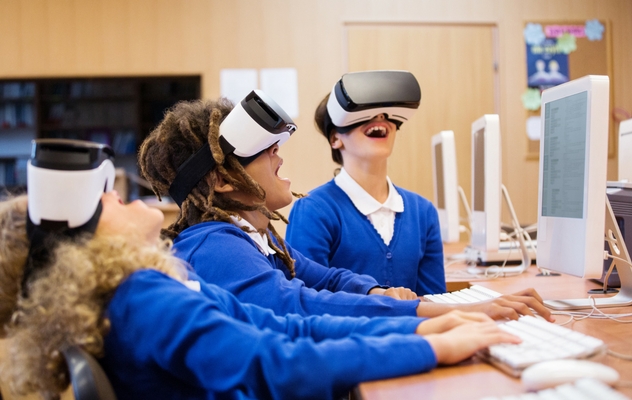Virtual Reality in the Classroom: Long Lives the Visions of Creative Minds in History

Albert Einstein said,” The only source of knowledge is experience!” Walt Disney created ‘The Most Magical Place on Earth”. What do these two brilliantly creative icons have in common? They made dreams a reality! Einstein’s theory of relativity changed the way we understand space and time. His explorations of the universe still rise to the surface today in our daily use of technologies such as Google Maps and Solar Energy. Walt Disney didn’t just stop with his vision for Magic Kingdom, which made a fantasy world real to its visitors. He also envisioned Epcot, an Experimental Prototype Community of Tomorrow, a utopian city of the future. Both iconic members of history believed that above all, experience was the key to creativity, learning and the exploration of new ideas and concepts. In today’s twenty-first century technologically advanced world, educators can stop dreaming of taking their students to places where they can experience phenomena, explore historical locations, and create new ways of doing things. These experiences can now come to them, right into the school and classroom environments. I am referring to the novel concept of using Virtual Reality to bring learning to life.
Imagine a learning experience that captivates student’s interest by allowing them to explore places that they may not ever actually be able to visit in real time. With virtual reality in the classroom, students can use immersive technology to bring their curriculum to life. They can visit the Myan ruins, hold a beating heart, and even fly over the Alpine mountain range…all in a matter of minutes of their school day. It sounds costly and in many cases, it can be. However, the more aware educators are of the various VR options that are available to us, the more equipped we are to make cost efficient decisions about the implementation. Virtual Reality (VR) is a simulation experience generated through computerized technology software. VR provides three-dimensional imagery or contexts that can seem real to the learner. ISTE’s article entitled “25 Resources for Bringing AR and VR into the Classroom is a great resource to help educators understand what is available for getting started. After reading an article published by the TeachThought Staff at teachthought.com I was excited to learn of the benefits of VR in the classroom. One reason that was provided that stuck with me is the fact that VR enables students to experience a variety of careers first hand. With this type of VR experience the article states that students can see life through the eyes of a surgeon, museum curator, soldier, or other professional fields for a better picture of what life in that role would look like.
What a great opportunity for young minds as they wonder what they may be interested in doing later in life. I was also interested in learning more about using VR to support social and emotional learning of students. It was mentioned that with VR, teachers could bring the concept of empathy to life by giving students additional context with the sights and sounds of a setting or experience. The article also provided readers with 30 Of the Best Books To Teach Children Empathy for additional inspiration. Virtual reality in the classroom is a cutting edge initiative that I want to continue to learn about. As an aspiring educator, I would like to be able to gain the knowledge and technological skills needed to be a part of positive change in educational practices. Many students face adversity, lack of resources, have limited travel experiences, and oftentimes do not get a chance to experience anything other than their own general surroundings. Providing these near to real life experiences could close some of the achievement gaps that have been historically noted in the educational arena,, especially for rural and low income community schools. As a teacher, I may not be able to physically take my students to the “most magical place on earth” or allow them to explore space and different elements of time. However, I can open virtual windows for exploration so that they can validate Einstein’s beliefs by gaining knowledge through experiences that without VR they may not ever acquire.
